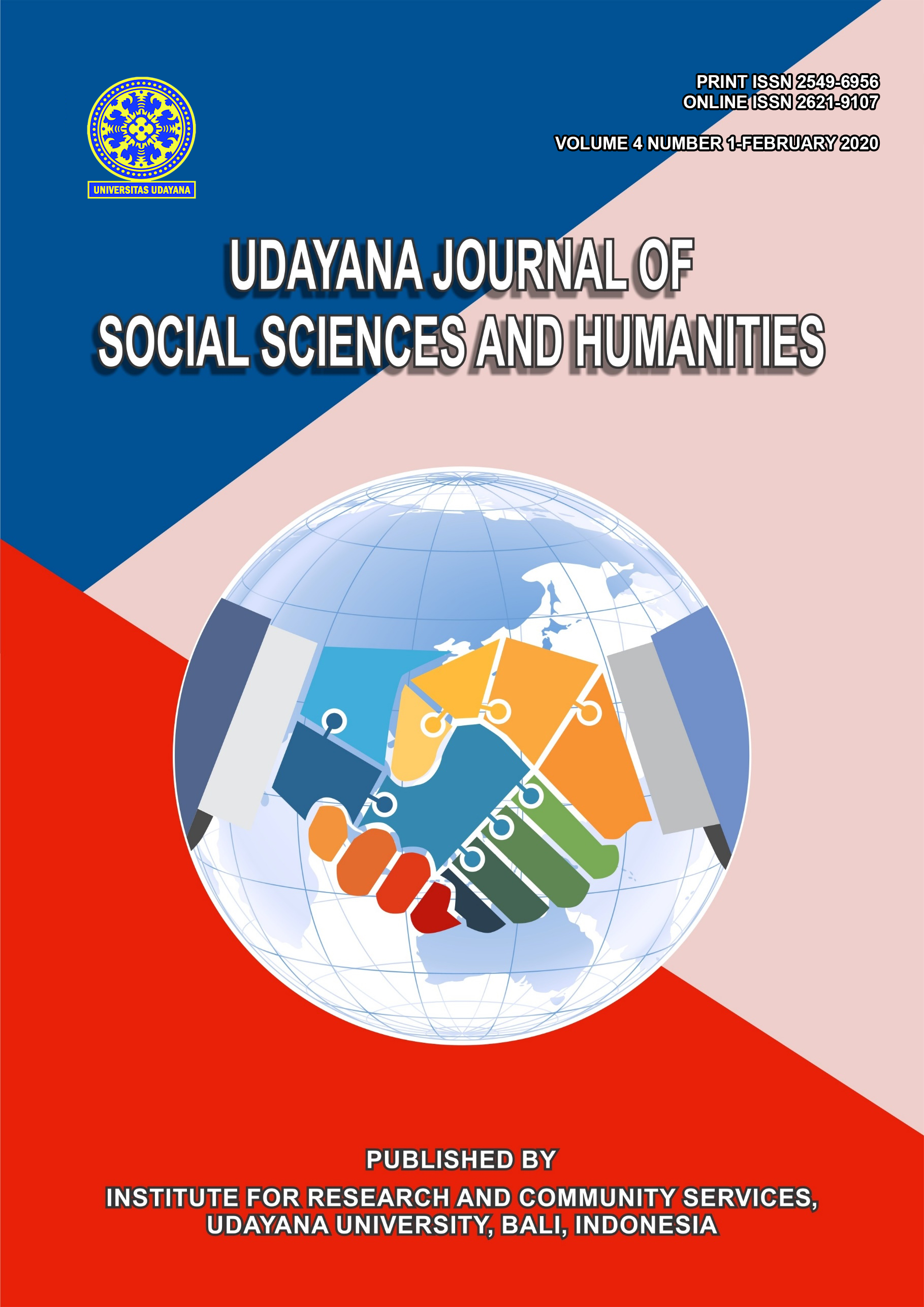Idiomatic Expression in Movie Screenplay Entitled Beauty and The Beast
Abstract
This study entitled Idiomatic Expression in Movie Screenplay Entitled “Beauty and The Beast”. This study is aimed at classifying the types of phrasal verb idioms and analyzing the meaning of each phrasal verb idiom encountered in Beauty and The Beast screenplay. The data were taken from the movie screenplay written by Stephen Chbosky and Spiliotopoulus entitled Beauty and The Beast. The data were collected using the documentation method by applying the note-taking technique. In the analysis, this study used the qualitative method, and narrative method used to present the data analysis. In analyzing types of idioms, the writer divided phrasal verb idiom enchanted into six types and explained each pattern. In analyzing the meaning of each phrasal verb idiom, the writer described the literal meaning of an individual word and then explained the idiomatic meaning appropriate with the dialogue. The result of the analysis showed that the dominant pattern used among phrasal verb idioms enchanted in Beauty and The Beast is the combination between intransitive + adverb and the least of all patterns is the combination of transitive + adverb + preposition. Furthermore, the most type of meaning found is transparent, where mostly, the meaning of phrasal verb idioms in the screenplay, and the meaning of their literal word are similar.
Downloads
References
Chbosky, S. & Spiliotopoulos, E. (2016). Beauty and The Beast Screenplay. California: Walt Disney Picture and Mandeville Films.
Creswell, J. (2014). Research Design (Qualitative, Quantitative, and Mixed Methods Approaches) 4th ed. America: SAGE Publications.
Lamont, M. (2005). The Historical Rise of the English Phrasal Verb. Toronto: University of Toronto.
Oxford advanced learner’s dictionary (8th ed.). (2010). Oxford: Oxford University Press.
Palmer, F. (1981). Semantic (Second Edition). Cambridge: Cambridge University Press.
Seidl, J. and McMordie. (1988). English Idioms Fifth Edition. Oxford: Oxford University Press. New York: Cambridge University Press.
Spivey, L. (2011). Types of Figurative Language. South Caroline: Super Duper Publication Inc.
Spears, R. (2005). Dictionary of American Idioms. United States: McGraw-Hill’s.






